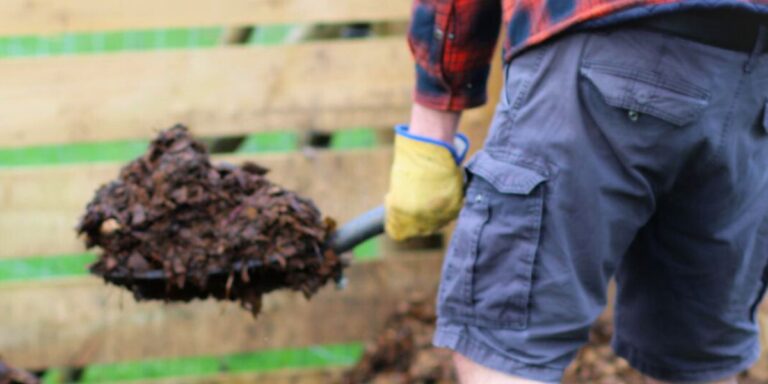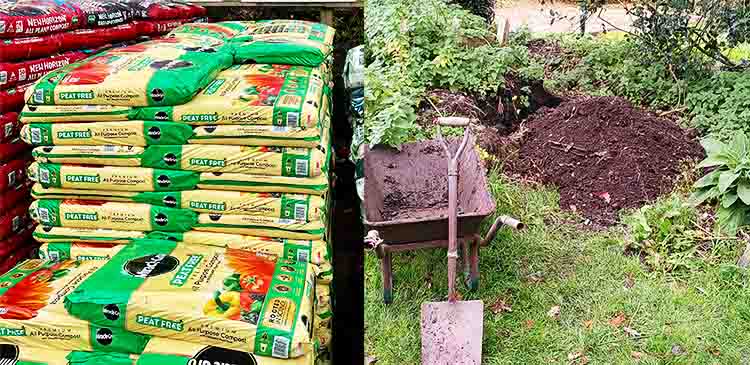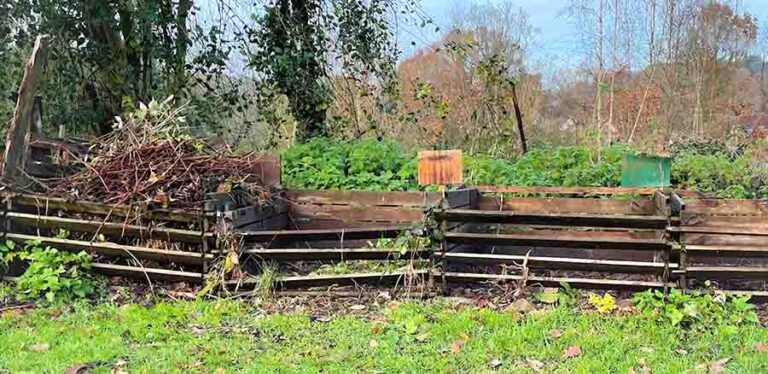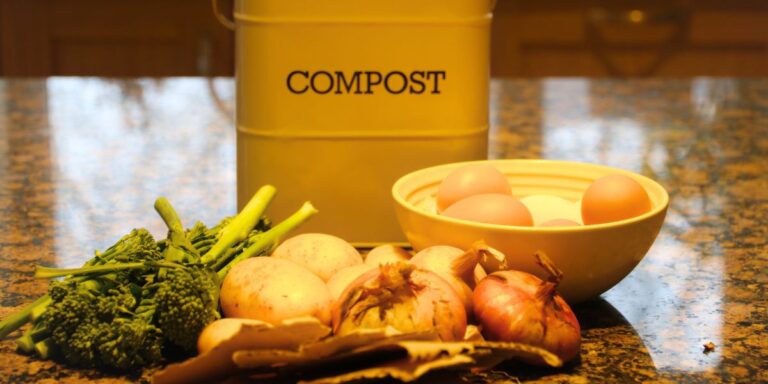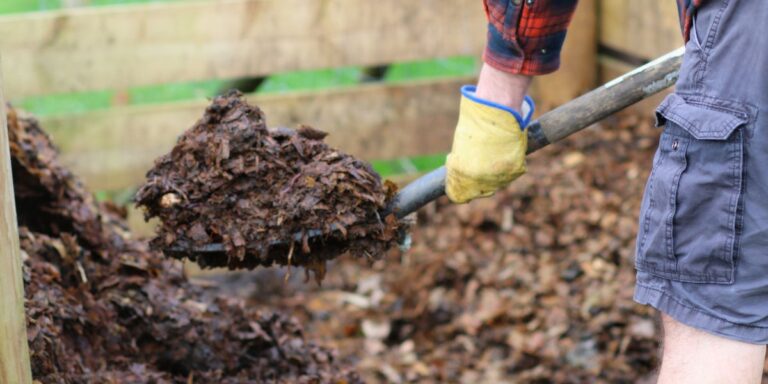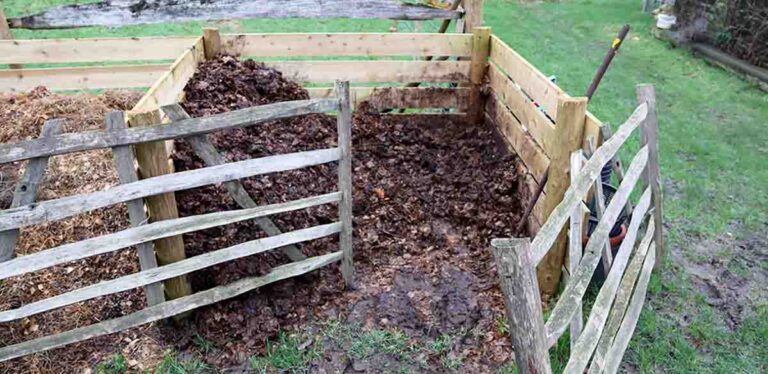Choosing The Right Composting Containers For Your Yard
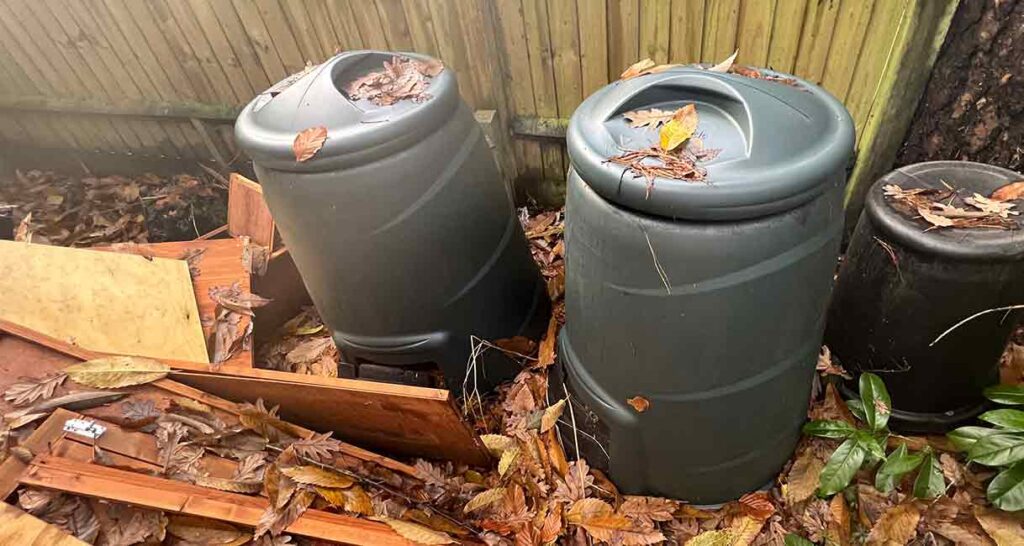
Let’s start out by saying that you don’t have to have any kind of container, to get started with composting. You can in fact simply make a compost pile straight onto the ground. And there are pros and cons to doing that.
Pros and cons of using containers.
Pros: A compost bin or container restricts the spread of composting materials. If you have pets, especially chickens, they will enjoy digging around in your compost pile and spreading it far and wide. A container of some kind prevents this, and keeps all your decomposing materials nicely together.
Cons: Using a container tends to make it difficult to turn your compost. And turning is important if you want to make a big pile, or if you want your compost quickly (ie weeks instead of years)
You can compromise by having a largish compost area, big enough for you to get in there with a fork and turn the pile from one side to another, but with some kind of rigid structure around it. This is what I have done with my purpose built compost bays.
Wooden compost bays
The first bay is made from four posts, one at each corner, with planks screwed onto them to help prevent the compost spreading. The second bay needed only two more posts. I’ll be adding a third and fourth bay over the next few months.

We’ve made the bays wide enough so that we can get our small tractor bucket in there to assist with moving the compost once it’s ready to use.
As you can see, we also have removable hurdles at the front – those help prevent our sheep getting in there and climbing around on the compost pile. Or taking a nap on top because the pile is nice and warm!
Wire mesh compost bays
Instead of wooden slats, we could have wrapped our posts in wire mesh. Chicken netting or stock wire are both acceptable alternatives, but they don’t provide much of a barrier against wind or sun
We think that the wood looks nicer, and helps to prevent the piles drying out too much in hot weather
Plastic compost bins
Before we moved to our homestead, we had a small garden where our dogs played, and the compost pile needed to be dog proof and well contained. So we used a purpose made plastic bin.
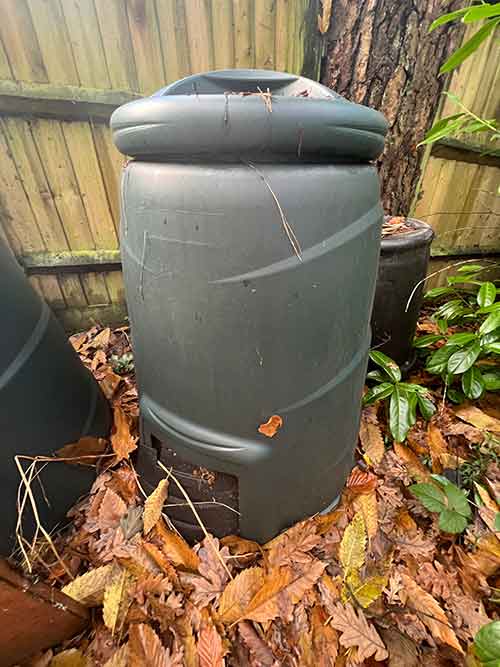
These are the most common types of composting container and are widely available online and in garden centers.
They usually have a little door in the bottom and the idea is that you keep adding your vegetable peelings and grass clippings at the top, and nice rich, dark, composted soil comes out of the door at the bottom.

That’s the theory anyway. It doesn’t always turn out that way because you need to get the ingredients right for the composting magic to work! Check out our introduction to composting to get off to a great start with your compost bin.
The problem with these tall narrow bins is that it is difficult to turn your compost pile. This may mean you are restricted to slow composting. You can buy a device a bit like a hand drill that you insert in the top of the bin, turn and lift and I’ll let you know when I have tested one of these!
In the meantime, a commercially available alternative is a compost tumbler.
Compost tumblers
These are large plastic drums that rotate, usually set on a metal stand. They work a bit like a cement mixer, and can be turned manually either by pushing the drum or using a handle.
These are a great idea for an urban garden without much space or for those that can’t manage to turn a free standing compost pile with a fork.
You’ll need to add water occasionally to keep the composting material damp, but the rotating action of the drum should keep it nicely aerated.
Below ground composters
You can also buy compost bins that are designed to be sunk into the ground and the contents left to slow compost over time.
These can work for small families that simply want to dispose of their organic waste in an environmentally friendly way, without have a product to use at the end of the process.
Straw bales
If you have access to straw, you can make a very environmentally friendly compost container from straw bales. They will rot down eventually, but in the meantime will help prevent your compost pile from spreading out.
You’ll need at least six bales, two for each of the longer sides and one for each end.
Wormeries
If the idea of composting with worms appeals to you, and you only have kitchen waste to dispose of, then a wormery might suit your family.
You can buy purpose made wormeries for vermicomposting, they are made up of layers, a bit like a bee hive. The worms move up through the layers when they have eaten everything in their level. You simply slide out the bottom layer when it is fully converted to worm casts. And move the layers down so that you can add a fresh layer of vegetable peelings etc, at the top.
You can pay anything from $60 to $200 dollars for a worm composting system and they make great gifts for avid gardeners and recyclers. You’ll need to provide your worm factory with some shelter and make sure that you mix their ingredients and ensure they have air and moisture, just as you would with any other composting system.
Kitchen collecters
We used to just collect our kitchen scraps in the bowl but we’ve now splashed out on a pretty kitchen compost container.

These come in all kinds of styles, some are really small, and with hindsight we should have bought a bigger one. But it’s useful for the odd apple core, banana peel, and teabag, which previously we were just dropping in the waste bin. Your compost collecter does need a handle, either on the outer container or on the lift out interior bucket if it has one.
If you’ve plenty of cupboard space you could choose a bigger, more utilitarian container and tuck it out of site under the sink.
Whichever type of container you choose to get your composting process underway, remember that compost needs air, water, greens and browns in the right proportions to thrive.
Share your ideas for composting containers in the comments below! And enjoy composting, it’s a lot of fun however you choose to do it!

